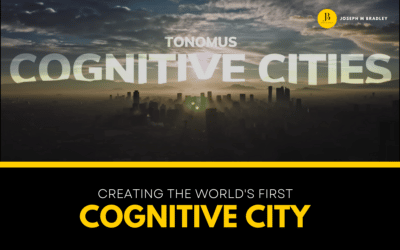At last count, Gartner tracks more than 450 IoT platforms in the market. And that’s just today. It’s astounding the number of tools and the amount of technology continuously being invented and reinvented. The impacts and the stakes are extremely high.
Nine out of ten companies will experience a revenue stall—and yet only one of those companies will recover and survive. One. This is the highly competitive world we live in. Think about the time it took Wells Fargo 20 years to get to 25 million online banking customers. Now, compare that to SnapChat. They exceeded 200 million customers in four years.
The real key is in how we innovate, not the tools we use to innovate. As an IT leader, how do you close that gap between tools and outcomes? In other words, how do you innovate in a hyper-innovative environment? The best way is to look at what you want in an entirely different way—beginning with five ways to navigate and ultimately drive innovation.
No. 1: Recognize the Source of Value
Don’t depend on a proof of concept to determine how your organization will create value. POCs have a way of leading you to a POC jail you’ll never escape. Define your source of value up front.
Three are three sources:
- Being the lowest cost provider
- Drive experiential value
- Build a strong ecosystem
If you think about retail, IBOTTA is a great example of cost value. They want you to use their tools for shopping in exchange for discount coupons. They give you cost back, lowest cost provider.
Trunk Club is an example of experiential value. It lets you talk to a “counselor” and they find the clothes right for you, rather you going to the brick-and-mortar store to sift through and select what you want.
For platform value, Shopify comes to mind. It’s all about building the platform and getting partners to provide you with greater and more value.
So before selecting a tool, or launching a POC, identify how you want to create value.
No. 2: Take Action Against Blind Spots
To take actions against your blind spots, you need to know where they are. Having a Kodak Moment used to be a good thing. Blockbuster used to be on every corner. They both lost due to their blind spot.
Don’t let that happen to your organization. Dedicate time and resources to uncover blind spots. I do this once a quarter. I take three people. One from finance, one from sales, and one from operations. Keep it to no more than five people and give them one simple question to answer in 48.
The question is, “How would you put us out of business?” Security has been doing this for a long time with “red teams,” who’re purely focused on the security on how to break the system. You need your own red team for business models. Give it just one quarter. You’ll be surprised the blind spots you discover.
No. 3: Stop Failing Fast
None of us want to fail. So stop failing fast, stop failing slow, and begin to improve your rate of learning. This is how you create value. If you just fail fast all the time, all you’re doing is repeating the same steps over and over again.
How do you determine if you’re failing fast? If you’re having the same conversation every quarter with your leadership team, “We’re not making our revenue numbers. We have to consider downsizing.” That’s failing fast. Failing slow is having that same conversation every year, rather than every quarter.
A better approach is to improve your rate of learning. A great example is Marvel comics. In ’95 and ’96, they filed for bankruptcy. Coming out of bankruptcy in 1999, they were still losing with net income at nearly minus a hundred million dollars. Around 2003, they came up with an idea to apply their comic book characters to movies and began to improve their rate of learning. From 2006 to 2009, net income went from about $60 million to over $205 million before Disney bought them for $4.3 billion.
Remember that in a hyper-innovative environment we have to think differently, act differently. These tips can help you build a foundation to stop sifting through tools and start driving business outcomes. Keep your focus on value, and watch innovation come to life.
No. 4: Close the Loop on Technology Investments
Technology investments begin and end with people. For instance, you start by identifying a problem that impacts people–your customers, partners, suppliers, or employees. Then you identify a dark asset. A thing you want to connect that’s not physically connected today. The next step is to extract data from that asset, and apply analytics to impact business process. So far we have People, Things, and Data. Many tech leaders stop at this point without closing the loop by fundamentally providing a connection back to people, which results in a new action being taken and value recognized.
It’s amazing how many leaders stop short of closing this loop.
Here’s an example. A supermarket wants to shorten checkout lines, because when people perceive or see a long line they abandon their carts. So enter a dark asset—a shopping cart or parking lot. Once connected, it lets the store know how many people are in the store, entering the store, and where they are in the store. They also have data to determine when customers were headed to the checkout line, so they could call for more cashiers. Perfect, right!
Problem is, they didn’t close the technology loop. They stopped at things and data. The manager would announce when more checkers were needed. Customers would hear the announcement that lines were long and abandon their carts. Hence, eliminating all value from the IoT solution.
Closing the loop on that last mile is critical. Notifying the checkers through a connection that a particular checkout line is long without announcing it to all the customers closes the loop. You have to close the loop with people.
No. 5: Build a Listening Infrastructure
Insight has become the currency of the 21st century. If you want to make clear sense of all of the tools available, and truly begin to innovate, take data and move it to insight. You do this by building a listening infrastructure.
When most people make decisions, they only use one or two sources at best. You may start with your own intuition, your gut, and you may refer to an expert or friend you know, someone that you’re close to in the organization before you make that decision.
Next time you need to make an important decision, write down who your listening sources are. You may find you’re making a financial decision and you’re not talking to anyone in finance, let alone the CFO. Use this exercise to find your listening gaps. It could be data from your organization’s ERP system, economic indicators, social media, or even naysayers. Don’t be afraid to hear all sides before deciding.
If you want better outcomes, and we all do, be vigilant. We’re living in a highly innovation environment, where changes comes fast and failure can come even faster. Make Five to Thrive part of your leadership toolkit, and watch innovation come to life.





